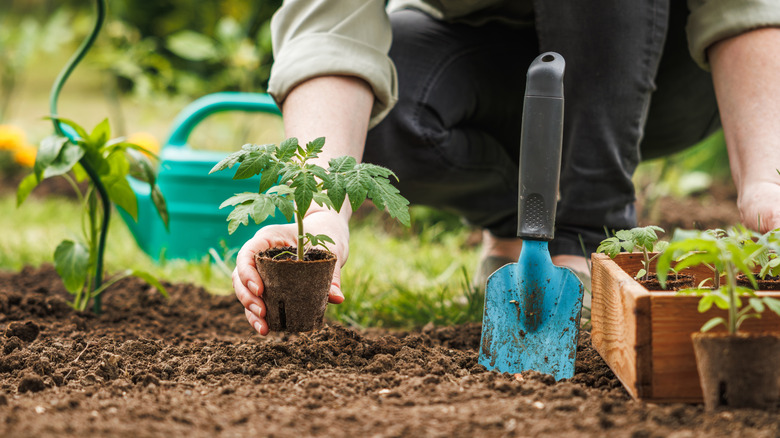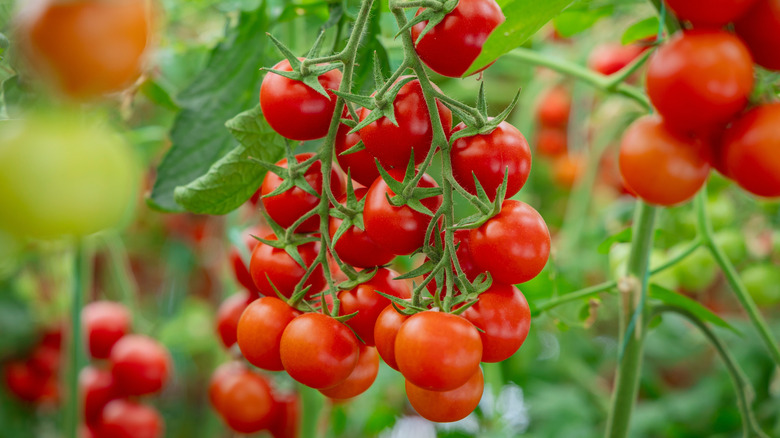The Best Type Of Soil To Use For Healthier Tomato Plants
While tomatoes are some of the most popular plants to grow in backyard gardens, they aren't necessarily the easiest. Not only do they require a full sun location and careful watering to prevent them from splitting, but tomatoes also have fairly specific needs regarding their soil. This includes not just the pH and amount of fertilizer in the growing medium, but also soil temperature, and drainage.
It's a good idea to get a soil test before growing plants in your garden, and this goes for tomatoes as well. The soil test can help you see what, if anything, needs to be improved for your plants to thrive. Tomatoes grow best in slightly acidic soil with a pH of around 6.5, but if you find that your soil is too alkaline, you can lower the pH level by adding sulfur as a garden amendment. Your soil test should also show how much nitrogen and other nutrients are available in your soil, so you can know if you need to add fertilizer. Tomatoes generally grow best in soil that has been amended with a balanced fertilizer that has equal amounts of nitrogen, phosphorus, and potassium.
Other considerations for the soil needs of tomato plants
It's not just nutrients and pH you need to consider when growing your tomatoes, though. You should also think about the soil temperature. Tomatoes are warm weather plants, and they can't thrive in soil that is colder than 60 degrees Fahrenheit, so be sure you don't try to transplant your tomatoes plants out too early if you're starting them as seedlings indoors. A layer of mulch is also an important addition to add to the top of your soil, as it helps regulate temperature and moisture levels.
Proper drainage is also important for healthy and happy tomato plants. They grow best in well-draining soil. Amending your soil with compost or other organic material can help improve drainage. You can also grow tomatoes in 5-gallon buckets, containers, or raised garden beds if necessary. Don't forget to rotate where your tomatoes are planted, as well. Planting them in different spots each year can prevent your plants from becoming victims of soilborne pathogens and pests like root-knot nematodes.

